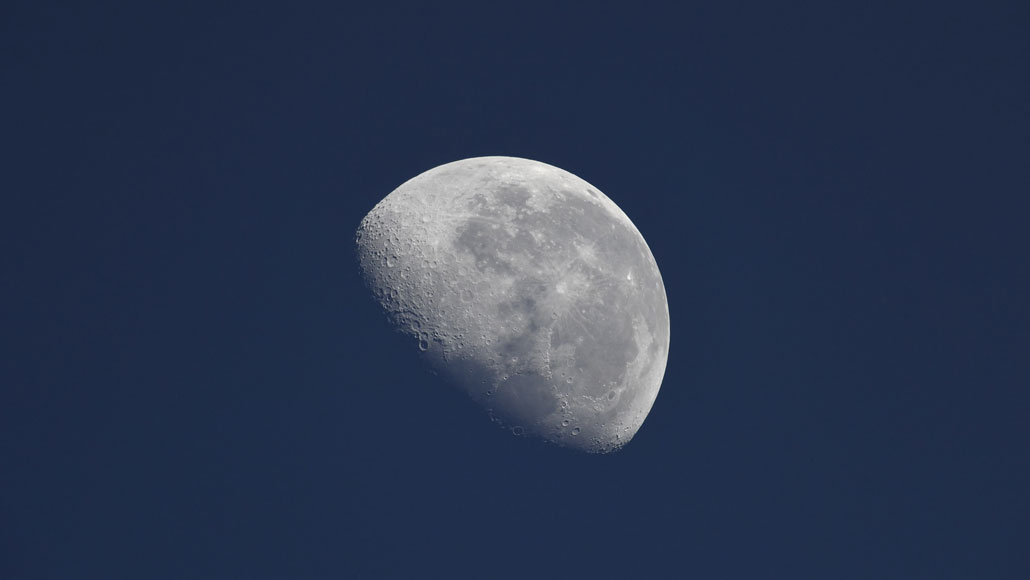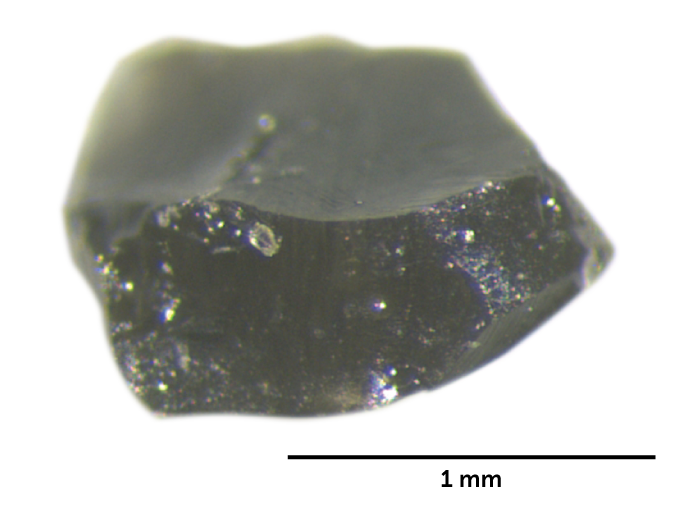
Earth’s moon has been unprotected by a magnetic field for at least 4 billion years, a new study suggests.
T. Pesquet/ESA, NASA
- More than 2 years ago
A lunar magnetic field may not have just been short-lived; it may have persisted for only a blip in geologic time, a new study finds.
Shortly after the moon formed about 4.5 billion years ago, it may have begun generating a magnetic field, a protective sheath that can deflect away charged particles from the sun (SN: 1/11/17). Now, analyses of moon rocks suggest that any lunar magnetic field was gone by at least 4 billion years ago, researchers report August 4 in Science Advances.
Magnetized lunar rocks brought back by Apollo astronauts decades ago were the first indication that the moon may have once had an internal dynamo, in which molten, iron-rich rock swirls inside the core of a celestial body, giving rise to a magnetic field (SN: 11/9/11). But how long such a lunar dynamo may have lasted has been unclear.
The moon’s core is “really small,” says John Tarduno, a geophysicist at the University of Rochester in New York, and it’s not clear how that core could have sustained a dynamo for long before cooling.
In the new study, Tarduno and colleagues examined the magnetization of a handful of Apollo rock samples. Analyzing the magnetism of tiny shards of metal trapped in crystals in rock dating to 3.9 billion, 3.6 billion, 3.3 billion and 3.2 billion years ago showed that those rocks were barely magnetized at all.
But the analyses also found that a piece of lunar glass formed during a meteorite impact about 2 million years ago “had a strong magnetic field — just a little weaker than Earth’s today,” Tarduno says. That’s odd, because “everyone agrees there isn’t a magnetic field on the moon now, and there wasn’t one 2 million years ago,” he says. “How does this happen?”

Taken together, these findings point to one conclusion, the team says: that the moon hasn’t generated a magnetic field for at least 4 billion years. The magnetization of the bit of glass happened due to the meteorite impact that also formed the glass itself, Tarduno and colleagues suggest.
That idea — that a meteorite impact can produce strong magnetization in rocks — is one that’s been discussed in many scientific studies in the past, Tarduno says. As the meteorite punches into the lunar surface at superfast speeds, that impact can partially ionize particles on the surface, creating a thick magnetized plasma. “The glass, as it was moving through this plasma, acquired that strong magnetization,” he says.
The moon has been repeatedly battered by meteorites over time (SN: 4/24/20). And that means that other relatively young and highly magnetized lunar samples that researchers have puzzled over may have gotten their magnetization in this way, Tarduno says. If so, that may also help explain results from recent studies, based on analyses of the magnetization of a moon rock dating to between 2.5 billion and 1 billion years ago, that have suggested the moon’s magnetic field might have lingered until as recently as 1 billion years ago (SN: 8/9/17).
Sign up for our newsletter
We summarize the week's scientific breakthroughs every Thursday.
Geodynamicists have wrangled over how the moon’s small core could have sustained a magnetic field for billions of years or even if the moon ever had a magnetic field at all, says Lisa Tauxe, a paleomagnetist at the Scripps Institution of Oceanography in La Jolla, Calif. Modeling studies of the moon’s core “just have a great deal of trouble generating enough oomph to make a magnetic field, whereas you can do that pretty easily for the Earth.” The new study, she says, “presents a well-argued case against a long-lived field.”
If any lunar magnetic field did disappear about 4 billion years ago, the lengthy bombardment of the moon’s surface by the solar wind since then may have left a hidden wealth of helium-3 and water buried in the lunar soils (SN: 4/15/19). Those are products that future moon expeditions may be able to mine for energy as well as life support.
Drilling into those soils may also give scientists an unprecedented glimpse at the past physical properties of the sun, which could also help scientists better understand conditions on the early Earth, Tarduno says. “[We] have the potential now to learn both about the ancient sun and early Earth’s atmosphere, which you’re not going to get in any other way,” he adds. “That’s really exciting stuff.”







